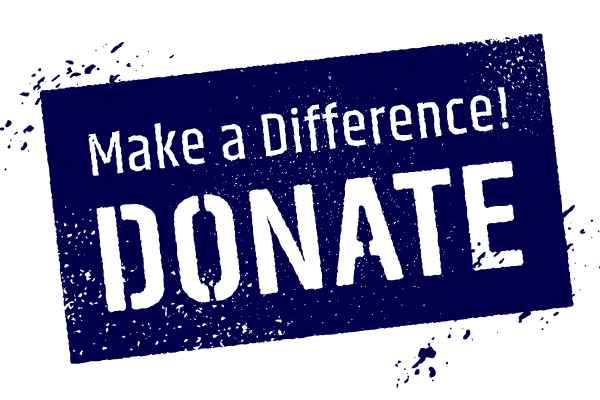For as long as I can document my family history, we took great pride in supporting Israel with our wallets. My great great grandfather built one of the first homes in pre-state Israel, a farm house in Petach Tikvah, during the Ottoman Empire. In 1914, my great grandfather paid a visit to Palestine to see his wife’s relatives and brought back items made of olive wood, said to be carved by blind Jewish orphans in Jerusalem. During the Great Depression, my grandmother purchased kosher chocolate from Palestine sold by a door-to-door salesman, though milk for the twins was sometimes too dear.

While we always supported Israel both before and after it became a state, we never bought anything from Germany, because of the unspeakable extermination of the 6 million, or from Spain, because of the Spanish Inquisition. If my dad heard that a certain store was anti-Semitic, we no longer patronized that store.
All these anecdotes are part of me. I give them over to my children so they will be a part of them. And in the mentoring programs run by Kars for Kids, we try to help youths flesh out their roots to ground them in their history, just as my roots help me know my place in the larger scheme of things.
The Good Guy
For my family, there has always been a clear division: Israel was the good guy we supported. Come Hell or high water.
But kids these days. Whatcha gonna do? There is an ugly trend in which it has become popular to paint Israel as the bad guy and to tighten up the formerly loose purse strings, once so generous. The trend is based on a myth in which instead of being brave and democratic, Israel is an occupier on someone else’s land.
It’s a lot of malarkey but it’s REAL POPULAR malarkey. Luckily, not all of us have taken the blue pill.

For those of you who have chosen the truth and are courageous enough to put your wallets where your brains are, I urge you to support Boutique Katom. This online store, the brainchild of Gedaliah Blum, is where you can buy superb works of art from Jewish artists residing in Judea and Samaria. The motto of Boutique Katom is, “Bring Yesha into your home.”
“Yesha,” is the acronym for Yehuda and Shomron (Judea and Samaria).
The store was the natural offshoot of Dapei Katom, the equivalent of the American Yellow Pages, which serves as a Jewish business directory for Judea and Samaria. Dapei Katom was born in 2009, as a direct response to the ever-growing calls for boycotting the settlement community. Boutique Katom serves as the English-language showcase for items made by real people, residents of Yesha.
I spoke to Gedaliah:
V: Why art?
Gedaliah Blum: The point was that with Art, what is on the canvas is a reflection of the artist. The artists put their souls into their work. If they are in a bad mood, it comes out in the painting. Living in Judea and Samaria is an inspiration to each and every artist we work with and it comes out in their work. Therefore, when we say “Bring Yesha into your home,” it’s not just a picture, it’s the spirit.
V: Obviously, the word “Katom” (“orange”) in the name of your boutique signifies the dispersed Jewish communities of Gush Katif, in Gaza. How do you tie in that idea? That you’re all settler sistahs and brothas?
Gedaliah Blum: During the time of the dismantlement of Gush Katif, orange was the color that signified the struggle. But when we were there we saw beyond the struggle to the “ruach” (spirit) of the people—the people who showed up to support the people of Gush Katif, the people of Judea and Samaria. So we wanted this ruach to continue and not die out.
Plus, from a marketing perspective, everyone knows what is present on a website when it’s called “Dapei Katom” or “Boutique Katom” or at least most of them do.
***

Full disclosure: when a friend asked if I would write about Boutique Katom, and made the introduction between me and Gedaliah, I didn’t expect much. I thought: “More ho hum Judaica.”
But I went and took a look and found some exquisite pieces such as this oil on canvas by artist Tamar Rund, Valley of the Almond Trees. This view of almond trees is as familiar to me as my right hand, because I used to live on a settlement situated on the same mountaintop as Pnei Kedem, where the artist resides.
I love Rund’s lush use of color. There’s the movement of the wind and just that tinge of loneliness you sometimes feel in the open, here in Judea. I never tired of that view when I lived there, and gauging by the series of paintings in Rund’s collection, she doesn’t, either.

I was also taken with Interior in Jerusalem by Ruth Pasder, a French immigrant to Israel, and a mother of 6 children. She captured the light exactly as it is in a stone home in Jerusalem, on a lazy autumn morning.


Another French artist featured on the site, Ora Uziel, also has a particular knack for catching the light as we see in her After the Rain, where the artist has left us a description that reads like prose
“A moment caught, after the rain.

The dark [palette] edged with orange.
This is a very special time – sunset after the rain.
Like a secret emerging from the drama of the storm.”
It was difficult to choose even a few paintings to highlight here, since there were so many paintings that made my heart give that little ping it gives when I know I’m looking at something really thrilling.

My final selection here is Hagay Emmanuel’s Observation of which he says, “The human being should accept and [search] for different point of views, in this case looking at a tree [from the] bottom up.”
I absolutely agree, Hagay, including looking at Jewish settlement in Yesha as a good thing. Something the world is lately not so inclined to do.
The Boutique Katom website is a marvel of design. We can look at the paintings in close detail. We can read about the artists or watch and hear them tell us a bit about themselves in youtube clips, as we choose.

The way I see Boutique Katom, is this: you go to the website, buy one of these gorgeous works of art, and hang it on your wall. Every day you will see your painting on the wall and get pleasure from its presence in your home. You will enjoy it for its own beauty and because it is a reminder that you have helped to support a family in Yesha, in the Holy Land.
Every day, your children will see these paintings and be reminded that supporting Israel is an important value; that Israel is the good guy, the one we cherish and nourish. When guests ooh and aah over your latest art acquisition, you can tell them exactly where you got it, at Boutique Katom, and why, in addition to gracing your walls with color, the act of purchase was a mitzvah: a good deed.



